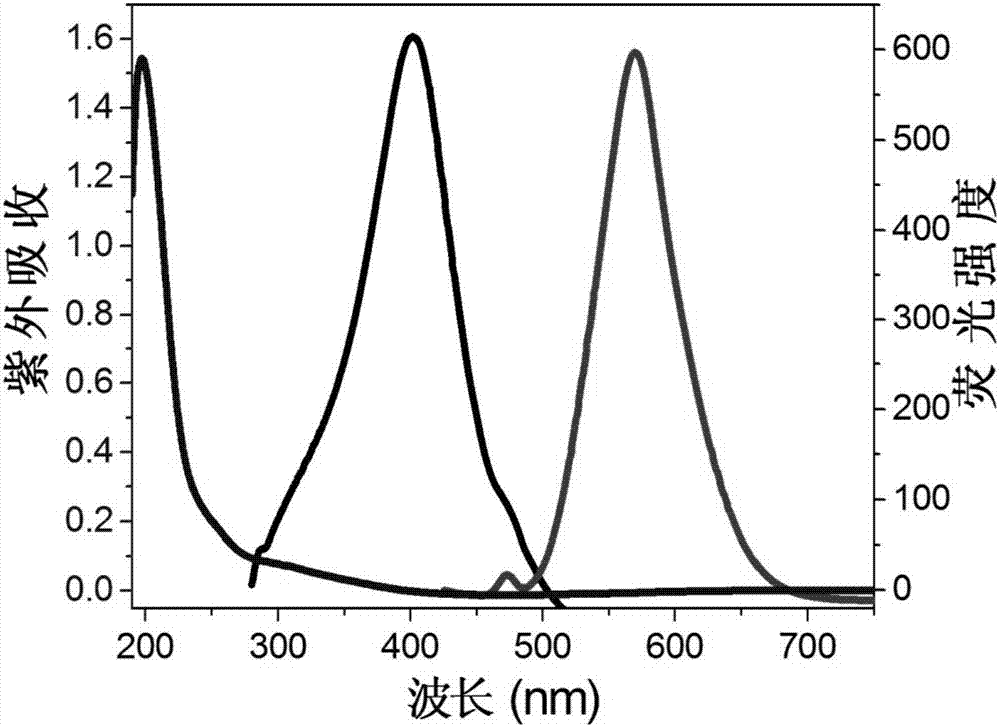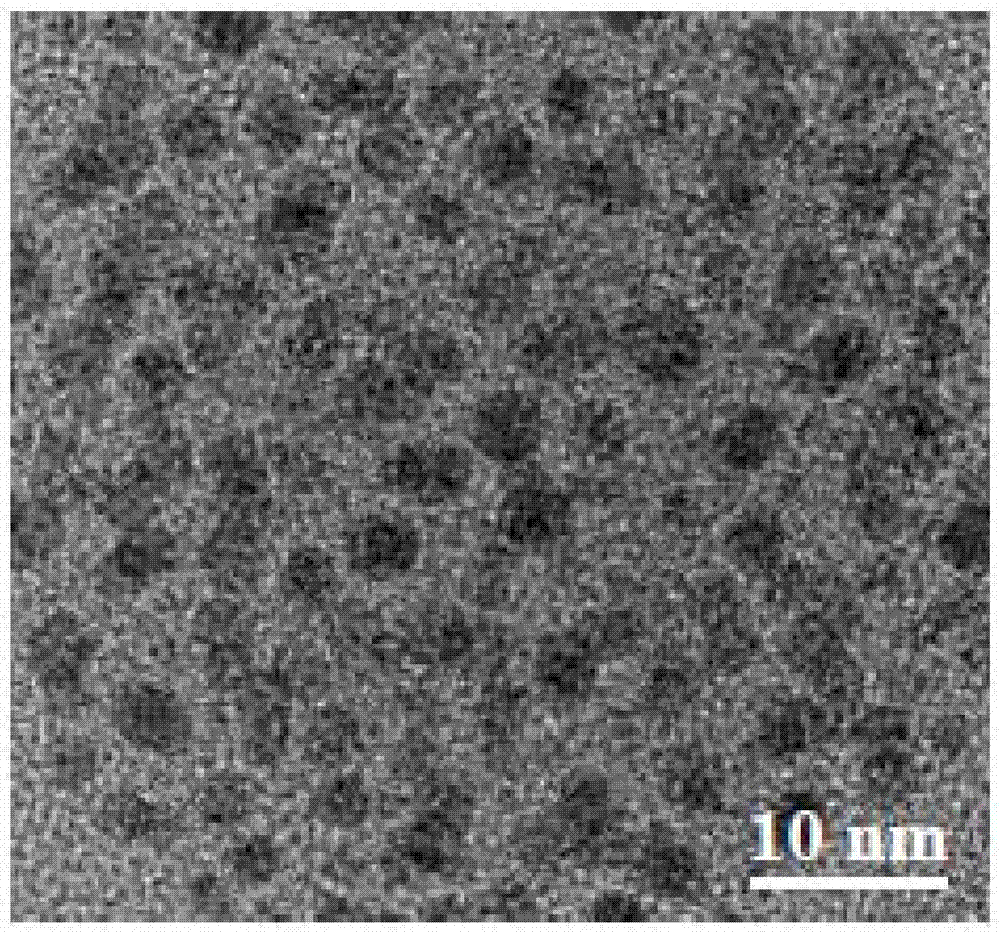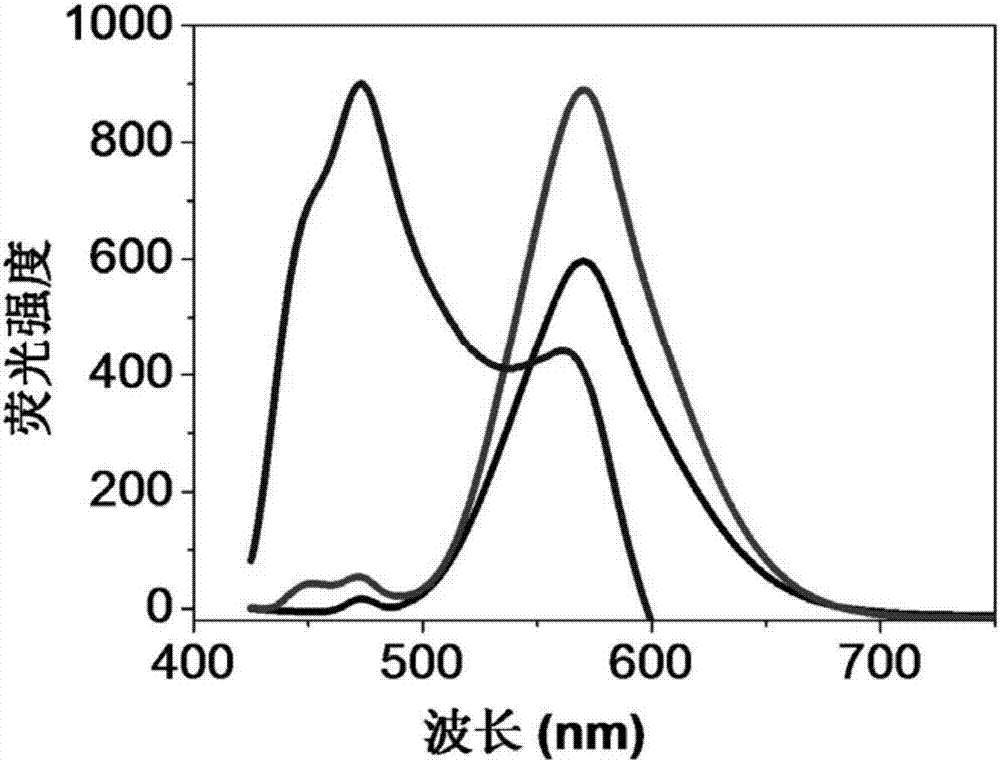Application of glutathione-stabilized gold nano-clusters in detection of cysteine and lysine contents
A technology of glutathione and gold nanoclusters is applied in the field of amino acid detection, which can solve the problems of complicated operation, long reaction time, low sensitivity and selectivity, etc., and achieve the effect of simple preparation method and rapid detection.
- Summary
- Abstract
- Description
- Claims
- Application Information
AI Technical Summary
Problems solved by technology
Method used
Image
Examples
Embodiment 1
[0040] Example 1 Preparation and characterization of glutathione-stabilized gold nanoclusters
[0041] 1. Preparation of gold nanoclusters (GSH-Au NCs) using glutathione as a template
[0042] Using glutathione as a template to synthesize gold nanoclusters with fluorescent properties: the synthesis of fluorescent gold nanoclusters is based on the method reported in the literature [see: Chen W.B., Tu X.J., Guo X.Q.Chem.Commun., 2009, 1736–1738. ], made some improvements, the process is as follows: first, the newly prepared glutathione aqueous solution (5mM, 10mL) and tetrachloroauric acid aqueous solution (5Mm, 10mL) were mixed under vigorous stirring, and then the mixture was reacted for 2~ After 5 days, the product was obtained as a pale yellow solution. In this experiment, the concentration ratio of reactants and raw materials is 1:1, and the reaction conditions are: reaction temperature 30°C, and reaction environment is sunlight or sunlight lighting conditions. After impro...
Embodiment 2
[0047] Example 2 Glutathione-stabilized gold nanocluster fluorescent probe detection of cysteine
[0048] This example will describe in detail how to use the gold nanoclusters of the glutathione template prepared in Example 1 to detect cysteine.
[0049] Use the prepared fluorescent glutathione-stabilized gold nanocluster probe to detect cysteine Specific steps: Take 300 μL of the prepared glutathione-stabilized gold nanocluster sample, add it to a centrifuge tube, and then add a series of concentrations working solution of cysteine, respectively, to detect the effects of different concentrations of cysteine on the fluorescence signal of glutathione-stabilized gold nanocluster probes (final concentrations of 0, 5, 10, 15, 20, 25, 50 , 75, 100, 125, 150, 175, 200, 225, 250, 300 μM). Dilute with double distilled water to a final volume of 3 mL, mix well, and measure. Under the excitation of 402nm wavelength light, the fluorescence spectrum of glutathione-stabilized gold na...
Embodiment 3
[0051] Example 3 Glutathione-stabilized gold nanocluster ratiometric fluorescent probe for detection of lysine
[0052] This example will describe in detail how to use the gold nanoclusters of glutathione template prepared in Example 1 to detect lysine.
[0053] Using the prepared glutathione-stabilized gold nanocluster ratiometric fluorescent probe to detect lysine Specific steps: Take 300 μL of the prepared glutathione-stabilized gold nanocluster sample, add it to a centrifuge tube, and then add a series of concentrations The lysine working solution was used to detect the effects of different concentrations of lysine on the fluorescence signal of glutathione-stabilized gold nanocluster probes (final concentrations were 0, 2.5, 5, 7.5, 10, 12.5, 15, 17.5 , 20, 22.5, 25 μM). Dilute with double distilled water to a final volume of 3 mL, mix well, and measure. Under the excitation of 402nm wavelength light, the fluorescence spectrum of glutathione-stabilized gold nanoclusters ...
PUM
| Property | Measurement | Unit |
|---|---|---|
| diameter | aaaaa | aaaaa |
| wavelength | aaaaa | aaaaa |
Abstract
Description
Claims
Application Information
 Login to View More
Login to View More - R&D
- Intellectual Property
- Life Sciences
- Materials
- Tech Scout
- Unparalleled Data Quality
- Higher Quality Content
- 60% Fewer Hallucinations
Browse by: Latest US Patents, China's latest patents, Technical Efficacy Thesaurus, Application Domain, Technology Topic, Popular Technical Reports.
© 2025 PatSnap. All rights reserved.Legal|Privacy policy|Modern Slavery Act Transparency Statement|Sitemap|About US| Contact US: help@patsnap.com



